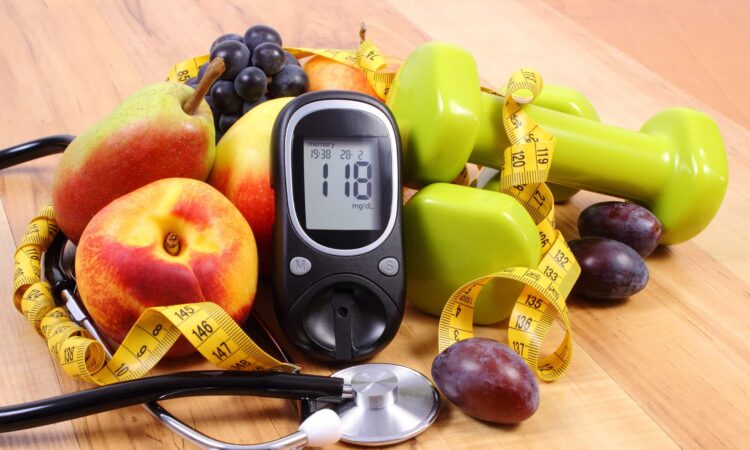
Medical science these days is searching for a lot of ways to “predict” the onset of chronic diseases – before symptoms appear.
This is a good thing if you approach it with the right attitude.
It’s much easier for doctors to successfully treat a disease – especially a long-term chronic one such as Type 2 diabetes – if they can see it coming before high blood sugar has already shredded the linings of your arteries and your nerves.
I’m sure doctors want to know a disease is on its way long before the “official” onset, so they can better help their patients.
Unfortunately, these predictors are usually oversimplified by the media – reporters aren’t trained in medical research – and lead most people to believe these predictors can’t be changed.
That’s the WRONG attitude.
A Predictor Just Means, “If This Goes on . . .”
After all, we’ve known for decades that heart disease, cancer, and others – including Type 2 diabetes – don’t appear overnight, like a cold.
They take years to develop.
Chronic diseases are a long process – not a random overnight event.
If a predictor shows your health is moving in the wrong direction – change!
The Follistatin Study Predicting Type 2 Diabetes
Carried out by scientists at Lund University of Sweden, the results came out not too long ago.
They performed a large number of tests on 4,000 Swedes and around 800 Finns, then followed these subjects for twenty years. (At the beginning of the study, their median age was 57.)
The result: increased levels of follistatin – a protein in your blood – predict the onset of Type 2 diabetes up to 19 years before it’s officially diagnosed.
They found that Swedes with elevated follistatin levels in their blood (at the beginning of the study) were 1.24 times more likely to develop Type 2 diabetes than Swedes with normal follistatin levels.
Finns with high follistatin were 1.31 times more likely to develop Type 2 diabetes.
Obviously, if you have high levels of follistatin, that’s concerning.
Does this mean you should have your follistatin tested, and if it’s high just give up on life?
That’s the problem.
Both diet and exercise (and other factors, including pregnancy) affect your levels of follistatin.
Because type 2 diabetes is so closely correlated with obesity, your Body Mass Index may be a much easier predictor of the onset of diabetes.
The median BMI of the subjects in this study was around 25 – which is far below America’s average of almost 30.
In the study, I should note, elevated follistatin predicted diabetes even with all other factors eliminated (age, blood sugar levels, BMI, what they ate, and how much they exercised).
Anyway, a rise in risk, while nothing to ignore, is not guaranteed. It’s not like predicting the sun will rise in the east tomorrow morning.
Not everybody with high follistatin developed diabetes.
Some people with normal levels of follistatin did develop diabetes.
It’s a matter of probabilities, not guaranteed certainties.
Besides, whatever you eat today and however much (or little) you exercise . . . you can change tomorrow.
Always keep that in mind. You’re not trapped in quicksand.
You can choose to change.
The Problem is Growing Quickly
Type 2 diabetes is a fast-growing problem around the world.
According to the CDC, over one in ten Americans (11.3%) have diabetes, 95% of them having Type 2.
Around 96 million – 38% of all adults – have prediabetes. That means they have too much sugar in their blood, but it’s not – yet – offically diabetes.
Of adults over 65, 33% have full diabetes.
26.4 million have prediabetes. That’s a total of 48.8% – nearly half.
That means over 80% of older adults have too much sugar in their blood.
A huge percentage of Americans – and fast-growing numbers of people around the world, including China and India – are riding on a train they CAN SEE is a few years away from running off a cliff.
Yet they stay on it, even though they could change to a healthier train/lifestyle.
What Does Having a High Level of Follistatin Even Mean?
Your liver produces follistatin to promote the breakdown of fat from your adipose tissue (your stores of fat).
This causes your liver to store more fat, leading to an increased risk of both nonalcoholic fatty liver disease and Type 2 diabetes.
Follistatin levels are regulated by the glucokinase regulatory protein (GCKR) – and high levels of it are correlated with higher insulin resistance.
However, there must be more to the story because the bodybuilding community LIKES follistatin. You can find plenty of videos and articles saying it helps you lose weight and build muscle. You can buy follistatin supplements and find advice on raising it naturally.
Myostatin is a compound that suppresses the growth of muscle – and follistatin inhibits myostatin.
Besides – if you noticed – I said follistatin pulls fat out of fat tissue. Isn’t that a GOOD thing? It’s what tens of millions of people are trying to do – lose fat.
And one good way to increase follistatin is exercise – especially resistance training such as weight lifting.
And, especially, if you exercise while in a fasted state.
My Idea
If your follistatin is pulling fat calories out of your fat cells, don’t let it just hang out in your blood so it can be stored in your liver instead of your old fat cells.
Burn it. Exercise. Use that fat as it was meant – as fuel.
The fat you burn by walking, running, swimming, or biking won’t be stored in your liver. It’ll be G.O.N.E.
Also, stop eating the simple carbohydrates, processed junk, and fatty foods we know are highly correlated with Type 2 diabetes.
Give your body time to rest between meals – and burn off more fat.
You don’t need to test your follistatin levels. Scare yourself right now, so you eat better and exercise more.
Jump off the train headed for the cliff of diabetes.
Climb on board the train headed for good health and long life.
You have that choice.
https://www.youtube.com/watch?v=so8mokrhdtE
https://www.ncbi.nlm.nih.gov/pmc/articles/PMC8580990/
https://www.cdc.gov/diabetes/basics/type2.html
https://www.youtube.com/watch?v=sZ42qQuGqvE
https://studyfinds.org/diabetes-marker-predicts-disease/







